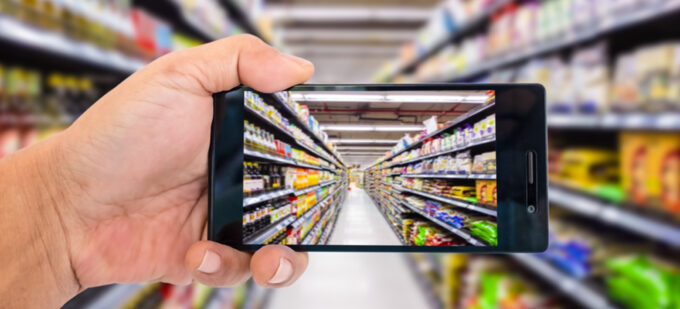The success of mobile development is often attributed to the use of the right technologies. Before making a decision, you need to understand which technologies are used today and which will be in demand tomorrow.
Another essential thing for success is selecting the right software development company such as MLSDev to implement this mobile solution. Top IT teams like MLSDev follow the latest tech trends and innovations to provide their clients with top-notch solutions that win app users’ hearts.
Let’s check the key technology trends in mobile that will get even more edge in the next few years.
1. Artificial Intelligence

There are many talks about Artificial Intelligence (AI) during the last decade. Still, we haven’t really seen its real power since the technology is just gaining momentum. However, you might have probably interacted with such solutions as Siri by Apple and Cortana by Microsoft – smart voice assistants powered by AI technologies.
The most vivid examples of AI use in mobile are chatbots and virtual assistants, systems for facial detection and recognition, different forecasting solutions, speech recognition apps, and recommendation engines widely used in eCommerce.
AI will not lose traction in the years to follow. Instead, AI adoption will become even more omnipresent, penetrating different spheres and industries.
2. Internet-of-Things
The Internet-of-Things solutions have been on the front line for the last few years, and we are entering the era of interconnected devices. Statista predicts that the number of connected devices will cross the point of 75 billion. Examples of IoT devices are numerous and include smart devices for home security, smart smoke detectors, door locks, and even devices for warehouse management.
Mobile devices and applications have already become the leading solutions for managing such IoT devices. Solutions with IoT integration can be used for many purposes, such as monitoring devices and sensors, tracking delivery, managing different home devices, autonomous cars, and even enterprise-grade management.
3. Augmented Reality

The real story of Augmented Reality started with the launch of Pokemon Go in 2016. Later, this technology found its way in multiple mobile solutions, such as IKEA mobile app, Disney Coloring Book, and many others. Even the U.S. Army uses technology for special operations and better positioning.
These are just a few examples of AR implementation. However, this technology is becoming more practical, finding its way into such spheres as object measurement, education, navigation, interior design, etc.
The adoption of AR will only grow since its use has become even more straightforward. For example, Apple provides ARKit and equips its devices with LiDAR Scanners for the ease of AR integration into mobile applications.
4. Geofencing and Location-Based Technology
Location-based technologies will become omnipresent in the years to come. Even today, there are a lot of applications that require users to share their geolocation data. For example, you cannot use Uber and Lyft without granting them access to your current location.
More and more applications will be adopting this technology to provide better services and marketing efforts. For example, by identifying a user’s location, an app can share personalized offers when the user is near the business.
5. Virtual Reality

Even though these two technologies often create confusion, Virtual Reality and Augmented Reality are different.
Aside from a mobile phone, users need additional devices, such as VR helmets and VR glasses to experience virtual reality. These can be paired with controllers and joysticks for a more immersive virtual reality experience.
In the future, this technology will gain traction, especially among developers of mobile games. By 2027, the VR market is expected to reach 62.1 billion by 2027.
6. Mobile Payments
Today, almost every mobile application offers mobile payment. Users make in-app purchases to pay for subscriptions, additional features, or to turn-off ads. eCommerce is one of the industries that rely on mobile payments the most.
In 2019, the mobile payments market was estimated at over a trillion dollars. By 2025, the mobile payments market value will reach four trillion dollars. There are a number of different solutions that you can include in your application, including the support of Apple Pay, Google Pay, PayPal, and other solutions that are popular in local markets.
7. Mobile Security

This trend is closely associated with the previous one. Because of the projected increase in mobile payments, companies behind mobile applications will need to dedicate even more attention to security measures.
The NowSecure company benchmarked 250 most popular Android apps and got disturbing results. Three out of four applications leaked sensitive personal data, putting users at risk of data and identity theft. Unsuspecting users provided their payment information without realizing that it will put them at risk of money and identity theft.
Under GDPR and other regulations, you might be fined multi-million penalties for a data breach. Thus, app development companies will pay even more attention to the security matters of their mobile applications to prevent costly fines, the loss of hard-won business reputation, and customer trust.
8. Biometrics
Smartphones are already actively utilizing biometrics technologies. Fingerprints scanners and facial recognition are widely used for user identification among smartphone manufacturers. This technology will only grow in popularity.
We believe that voice recognition and signature recognition will join forces with already existing technologies, providing even more options for authentication within mobile applications.
9. Cloud Technologies

The time when data was stored locally is far gone. The era of cloud-driven apps has already started.
Mobile applications based on advanced technologies such as AI, machine learning, etc. often rely on remote servers for data storage. The main advantage of such applications is fast performance and lightweight. They don’t overuse the resources of a mobile application and guarantee smooth functioning on any device, better loading capacity, improved storage, and much more.
Bottom Line
Digital technology is an area that is changing with lightning-fast speed. Just comparing today with the world of ten years ago, you can see how technologies have advanced over such a short time.
Still, it’s not enough to just build an application with the latest technology trends. Before stuffing the next app with artificial intelligence or biometrics, businesses need to understand what problems their target audience has and how technologies can help to solve these pain points. A data-driven approach to development is the only factor that will help to build startups and turn them into successful businesses.









